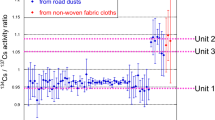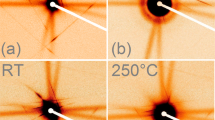Abstract
THE usual method of separating solid radioactive particles from the gas phase is precipitation by an electric field. This is the classical procedure for the collection of the active deposit of radon and thoron, and can also be applied to artificial radio-elements, such as radio-arsenic prepared in arsine by neutron bombardment1. The process depends on the presence of an electric charge on the particles ; and unfortunately, at least in the case of artificial radio-elements produced by slow neutrons, such a charge does not necessarily exist. It is, therefore, of practical as well as theoretical importance to seek other means of concentrating the radioactive particles. One promising means which we have tried is thermal precipitation, which is based upon a very simple principle.
This is a preview of subscription content, access via your institution
Access options
Subscribe to this journal
Receive 51 print issues and online access
$199.00 per year
only $3.90 per issue
Buy this article
- Purchase on Springer Link
- Instant access to full article PDF
Prices may be subject to local taxes which are calculated during checkout
Similar content being viewed by others
References
Paneth, F. A., and Fay, J. W. J., NATURE, 135, 820 (1935). J. Chem. Soc., 384 (1936).
For literature and details see Watson, H. H., Trans. Faraday Soc., 32, 1073 (1936).
See Green, H. L., Trans. Faraday Soc., 32, 1091 (1936).
Author information
Authors and Affiliations
Rights and permissions
About this article
Cite this article
PANETH, F., ROSENBLUM, C. Thermal Precipitation of Radioactive Substances. Nature 139, 796–797 (1937). https://doi.org/10.1038/139796b0
Issue Date:
DOI: https://doi.org/10.1038/139796b0
This article is cited by
-
Wilson Chamber Photograph of the Neutro-Electric Effect
Nature (1938)
Comments
By submitting a comment you agree to abide by our Terms and Community Guidelines. If you find something abusive or that does not comply with our terms or guidelines please flag it as inappropriate.



